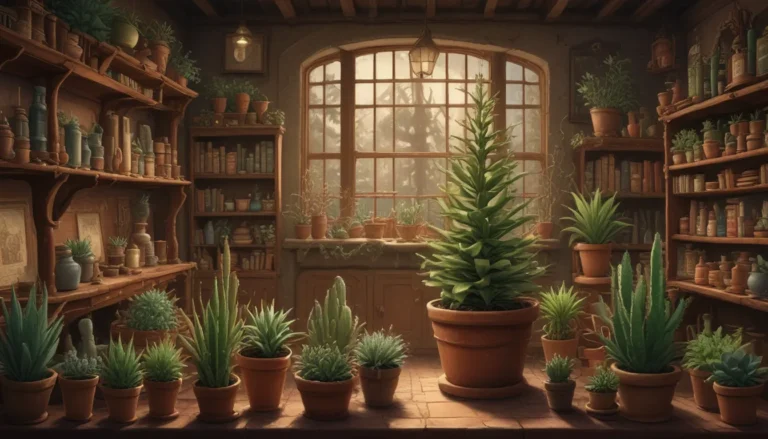A Complete Guide to Planting and Growing California Poppies

California poppies, scientifically known as Eschscholzia californica, are a vibrant addition to any garden. Their bright yellow-orange blooms light up the landscape and attract a variety of beneficial insects and wildlife. In this comprehensive guide, we will cover everything you need to know to successfully plant and grow these native wildflowers in your garden.
Cultivation and History
E. californica is native to California, Oregon, southern Washington, Arizona, Nevada, New Mexico, Baja California, and Sonora, Mexico. These flowers can be found in a wide range of landscapes, from hillsides to woodlands and roadside areas. There are two subspecies of E. californica: californica and mexicana, each with unique characteristics.
California poppies thrive in Zones 5 to 10 and can be grown as annuals or short-lived perennials. They are drought-tolerant, prefer well-drained soil, and are relatively low-maintenance plants. These flowers play a crucial role in supporting native wildlife and pollinators, making them a valuable addition to any garden.
Propagation
Propagation of California poppies is best done through seed sowing. Start by selecting a sunny, well-drained location for planting. Scatter seeds in the desired area or sow them strategically for a more organized approach. Keep the soil consistently moist until the seeds germinate, which usually takes two to three weeks.
If you prefer growing in containers, choose a deep container with ample space for each plant. Sow seeds in moist potting soil and keep them well-watered until germination occurs. Once the seedlings reach four inches in height, thin them to avoid overcrowding and promote healthy growth.
How to Grow
California poppies thrive in lean soil with a pH range of 5.0 to 8.0. Provide them with deep waterings when rainfall is insufficient to help establish their taproots. These flowers require minimal maintenance, making them ideal for wildlife gardens and low-maintenance landscapes.
You can deadhead the flowers to encourage more blooms and manage unwanted spread by harvesting seed pods. Allowing the poppies to self-sow can enhance their presence in your garden each year.
Growing Tips
- Grow California poppies in well-drained, moderately fertile soil.
- Choose a sunny location for robust blooms.
- Space plants 8-10 inches apart to promote healthy growth.
Maintenance
Minimal maintenance is required for E. californica, making them an excellent choice for low-maintenance gardens. Proper spacing and occasional pruning can help prolong their lifespan and enhance their blooming period. Harvesting seed pods can prevent unwanted spread and allow for controlled propagation.
Cultivars to Select
Consider adding cultivars like ‘Mikado,’ ‘Spring Melody Blend,’ and ‘Yukon Gold’ to your garden for a variety of colorful blooms. These cultivars offer unique petal colors and maintain the resilience of E. californica. Planting a mix of cultivars can create a captivating display of colors in your garden.
Managing Pests and Disease
While California poppies are relatively pest- and disease-resistant, they may encounter common garden pests like aphids, leafhoppers, and thrips. Monitor your plants regularly and take appropriate measures to manage pest infestations. Diseases like downy mildew, gray mold, and powdery mildew can be controlled through early detection and preventive practices.
Best Uses
California poppies are versatile plants suitable for pollinator gardens, meadows, borders, and containers. Their bright blooms and compact growth habit make them an excellent choice for adding color to your landscape. Consider incorporating E. californica in medicinal gardens to benefit from their healing properties.
Quick Reference Growing Guide
- Plant Type: Flowering annual or perennial
- Flower/Foliage Color: Orange, yellow/light green-blue, silver
- Native to: California, Oregon, southern Washington, Arizona, Nevada, New Mexico, Baja California, and Sonora, Mexico
- Hardiness (USDA Zone): 5-10
- Bloom Time: Spring-fall
- Exposure: Full sun, part shade
- Water Needs: Low
- Height: 7-24 inches
- Spread: 18-24 inches
- Maintenance: Low
Super-Bloom Swoon
California poppies are a delightful addition to any garden, evoking joy and admiration from onlookers. Their vibrant blooms and ecological benefits make them a valuable asset to native plant gardens. Share your gardening experiences and questions in the comments below to inspire others to cultivate these beautiful wildflowers.
If you enjoyed this guide, explore similar articles on native wildflowers and gardening practices to enhance your landscape and support biodiversity.
In conclusion, California poppies are not only aesthetically pleasing but also serve as an essential component of sustainable, wildlife-friendly gardens. Incorporating these native wildflowers in your landscape can enrich your gardening experience and contribute to the ecological health of your surroundings. Happy gardening!





